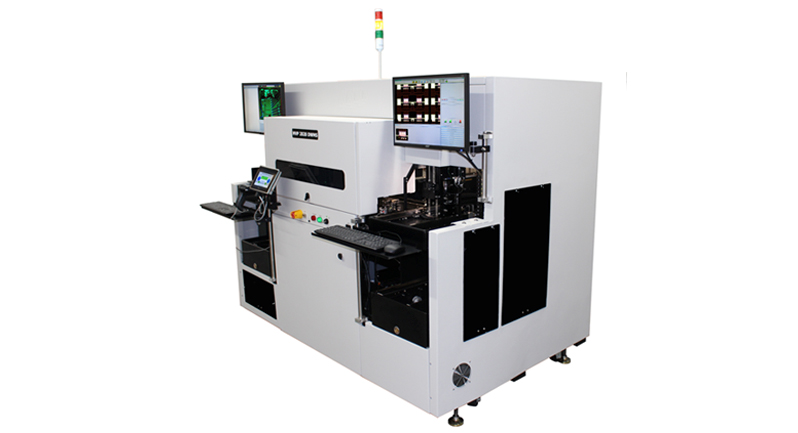
Here’s Why The Automated Optical Inspection Systems Trends are Making a Wave In The Industry. Due to the demand for the production of high-quality electronic products, manufacturers are opting for automated Optical Inspection Systems. The size of products is decreasing and the need to compacting all components in the same device will increase the chances of error therefore automated optical inspection systems are highly needed in such cases to identify defects.
This is commonly used in manufacturing processes to test the devices manufactured. The camera is attached in this which autonomously scans the newly manufactured device to test defects or failure or quality defect of the device. AOI is a contactless method of inspection that is applied in various stages of manufacturing process like solder paste inspection (SPI), pre-reflow and post-reflow, and bare board inspection
Automated Optical Inspection Systems is an automatic inspection system in which it visually inspects the transistor, LCD, or printed circuit board. Automated Optical Inspection Systems use optics for capturing high-quality images. The images of the printed circuit board are taken in order to detect any discrepancies or defects in the components that get assembled in the device. It is programmed, collects data, and sends it to computer software for analysis of the data. Automated optical inspection systems can be programmed according to the specific component to be inspected.
There are two types of AOI systems that are 2D AOI and 3D AOI. Due to lower cost and less complex programming, 2D AOI system is mostly preferred by the manufacturing companies. Many new technologies have been implemented at its software interface and image processing methods that have improved its features. 3D AOI provides a volumetric image of the object it inspects. This gives a high definition image of the components. It has more complex programming and is costly
For manufacturing any device or product, the manufacturer opts for two ways of inspection: inline and offline. Inline product inspection means the inspection process occurs in the production line itself. While in off-line inspection involve the inspection process when the product is removed from the production line. But most widely inline is used as it introduces a faster rate of inspection to the system. It makes the system sufficient enough to scan both sides of printed circuit boards. Due to such properties, it ensures high production in manufacturing companies.
When high production volume is targeted, the speed of assembly PCB components has also increased this increases the chances of error, so AOI is applied to detect such errors. For higher productivity in the manufacturing industries, the need for better inspection technique is high. As compared to manual inspection, there are many advantages to AOI. Automated inspection systems are able to adapt easily to the surfaces of different products. It is programmed and can work continuously, inspection speed is also higher than manual inspection. The error during the inspection is almost negligible. Altogether, it is time-saving and cost-effective for manufacturing companies. The products generated by automated inspection are mostly customer satisfactory and help the business of the manufacturer grow enormously.
AOI system is widely used in IT and telecom industries like in routers, communication devices, server, satellite system, LED display, etc. manufacturing of home appliances and smartphones also uses AOI for quality of production.it also finds its application in Automotive, Industrial Electronics, Aerospace & Defence and Medical devices manufacturing industries.
The AOI system is programmed. The main challenge faced by this system is the complex programming system and its operation. If not properly programmed, then will cause false detection and ultimately hamper the manufacturing of quality products. False call rate of detention by providing incorrect inspection data will tend to interfere with the performance of the machine. However, advanced technologies are been introduced in AOI systems such as artificial intelligence and 3D imaging that will decrease the frequency of false call rates and hence improve the performance of the system.
The Automated Optical Inspection Systems Market has been witnessing rapid growth due to extensive use of printed circuit boards in computers, electrical products in homes, and IT AND telecom industries all across the globe. All these sectors require high-quality electronic products and to ensure the products manufactured are non-defective AOI system is been opted by industries. The manufacturing market of vehicles is growing, the rise in the demand for durable and high performing electronic products in the automobile industry is also increasing and has led to an increase in the demand of the AOI system.
Additionally, advancements in technologies resulting in the manufacturing of slimmer and compact electronic devices will have a positive impact on the global market in the coming years. An increase in disposable income has also increased the demand for consumer electronic products, this also drives the market in a positive direction. Global Automated Optical Inspection Systems Market has been anticipated to rise at a growth rate of 20.4% CAGR over the forecast period.